Can diabetics eat bananas?
For diabetics, life is really a bit helpless, watching others gulp down any fruit, while they can only eat so little, eat more and afraid of blood sugar will soar. Especially in life, many fruits should be avoided, so there are many problems, bananas diabetic patients can eat? Watermelon diabetic patients can eat? Today, I will talk about the most concerned about the "diabetic patients can eat bananas," the problem.
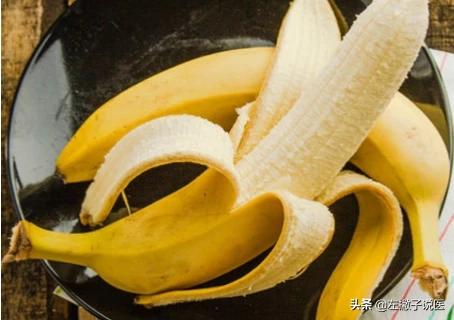
When it comes to bananas, affordable and nutritious, but also delicious, has been very popular, even diabetics want to eat bananas every day. But as a diabetic, the biggest worry is that the food they eat will seriously affect the changes in blood sugar, so they have to be careful with what they eat, at most just a few bites. So this banana in the end can diabetics eat it? How much can you eat? I will now analyze the analysis.
First of all, whether a food is suitable for diabetic patients to eat, the mouth is important to see whether the ingested food will cause serious effects on one's own blood sugar, and theThere are three main aspects of a food's effect on blood glucose that we look at, one is the carbohydrate of the food, one is the glycemic index (GI) of the food, and the other is the glycemic load (GL) of the food。
I. Carbohydrates in food
Carbohydrates in food are, after all, a matter of the sugar content of the food, and we all know that most of the sugar in our bodies is converted from carbohydrates. In other words, the more carbohydrates we consume, the easier it is for our blood sugar to soar, and it can be said that there is a positive correlation between them. Therefore, for diabetics, they should consume foods that are lower in carbohydrates in order to effectively control their blood sugar.
(ii) Glycemic index (GI)
Glycemic Index (GI) is the question of how fast or slow the blood sugar in our body rises after we consume food. For example, if we intake some high GI food, then the blood sugar in our body will rise at once. According to its impact on blood glucose, it can be divided into three types in nutrition, when GI>70, it is high GI food such as our common white rice, noodles, bread, desserts, potatoes, etc.; when 55 ≤ GI ≤ 70, it is the middle GI food, such as whole wheat bread, brown rice, etc.; when GI<55, it is the low GI food, such as most of the vegetables and fruits, omnivorous bread, milk and so on. Therefore, diabetic patients should consume some low GI foods.

III. Glycemic load (GL)
Many people may only know the carbohydrates of a food and the glycemic index (GI) of a food, but neglect the glycemic load (GL) of a food. In fact, this indicator is more reflective of whether a food is suitable for people with diabetes and how much of it can be consumed without affecting the changes in blood glucose. This glycemic load (GL) is actually the degree to which a food raises blood glucose levels when consumed. It can be said that the glycemic index (GI) refers to the rate of blood glucose elevation, while the glycemic load (GL) refers to the amount of blood glucose elevation, how much the food we consume can elevate the blood glucose level of our body. This can be calculated, and the glycemic load (GL) is calculated as GL=GI*carbohydrates/100. According to the degree of its impact on blood glucose, we can categorize common vegetables and fruits according to the following criteria: when the GL ≥ 20, it is a high load diet; when the GL ≤ 10 ≤ 19, it is a medium load food; when the GL < 10, it is a low load food.
How much of a food can be eaten we calculate according to this standard, ① when the GL is a high load diet, indicating that the consumption of the corresponding weight of food on the blood glucose impact is obvious; ② when the GL is a medium load diet, indicating that the consumption of the corresponding weight of food on the blood glucose impact is general; ③ when the GL is a low load diet, suggesting that the consumption of the corresponding weight of food on the blood glucose impact is not significant. So, diabetics, should be on a low load diet standard.
Can diabetics eat bananas? How many can I eat at a time?
Having analyzed the factors related to the impact of food on blood sugar above, let's analyze whether this banana is suitable for diabetics or not, and how much of it can be consumed. Let's first check the carbohydrates, glycemic index (GI), and glycemic load (GL) of banana from the Internet, and their values are 19 grams of sugar in 100 grams, GI value of 52, and GL value of 10.
If we eat 100g of bananas, then we calculate a GL of 19*52/100 = 9.8, which is approximately equal to 10, for a low load diet. This means that when a diabetic eats 100g of bananas, the effect on the blood sugar in the body is not significant.
But if we eat 200 grams of bananas, then we calculate a GL of 19*2*52/100 = 19.76, which is approximately equal to 20, for a high load diet, with a significant effect on blood sugar.
So, for diabetics, it is not that bananas can not be eaten, but only to eat a limited amount of food, eat 100g can be, but it is best to separate a few times to eat, if all of a sudden eat 100g of bananas, then you can not eat other carbohydrates for the time being. And when eating bananas, you should reduce the intake of other carbohydrates, to ensure that the day's intake of carbohydrates in a more stable amount, so as not to cause greater fluctuations in blood sugar.
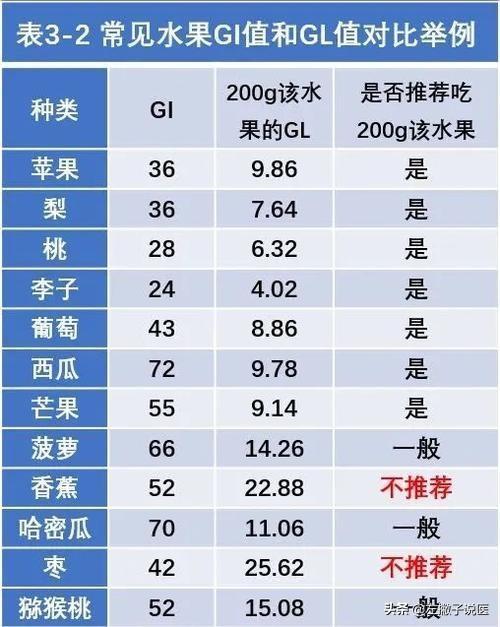
Author's note: I'm very happy to popularize health-related knowledge for everyone, I'm left-handed to say medical, every day in simple language for you to popularize professional medical knowledge, the code word is not easy, if you like my article, help me to point a praise! If you still have questions, you can leave a message in the comments section, welcome to pay attention to, forward, thank you for your support!
Welcome to pay attention to the headline: Shao Shao health
Bananas are low on the glycemic index, so why shouldn't diabetics eat more of them anyway?
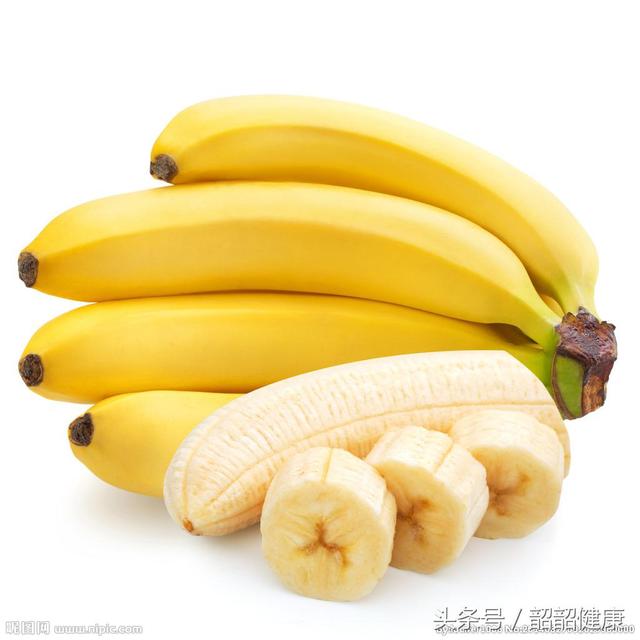
bananas
Bananas are truly a fruit for all ages, not only because they are rarely allergic, but also because they are nutritious and rich in potassium ions and many minerals.
Bananas have a glycemic index of 30, which is low on the glycemic index. But why shouldn't diabetics eat more bananas?
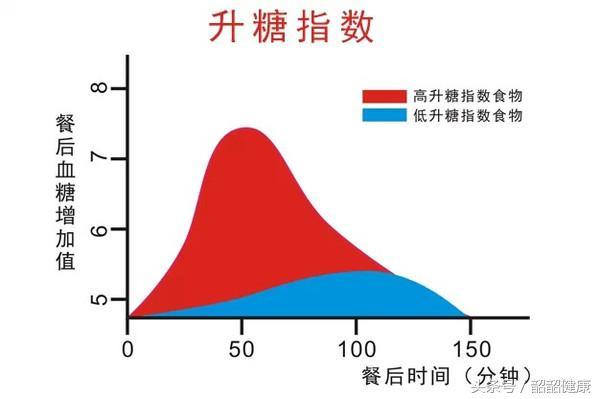
glycemic index
Bananas are rich in carbohydrates and have a high glycemic load
Every 100g of bananas contains 22g of carbohydrates, so the glycemic load of 100g of bananas is 6.6, while the weight of a banana is about 110-160g, which means that a large banana of 160g can cause a high glycemic load (10.56). So, although bananas are good, you should not eat too much at one time, it is best to eat only a small half. If you still want to eat it, you can eat it again after 3 hours.
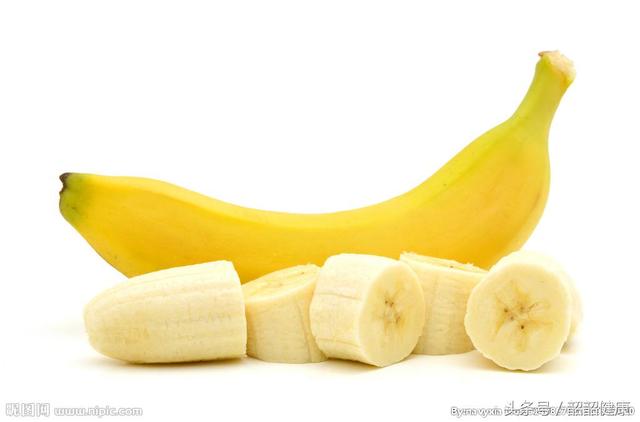
50g at a time is recommended
Bananas are rich in potassium and should not be eaten by people with diabetic kidney disease
As we all know, the prevalence of diabetic nephropathy is 50%. That is, half of the patients have kidney disease complications. And the potassium content of banana is the top three of all fruits. Banana, which is excellent for ordinary people, is indeed a poison for kidney disease patients. High potassium food will increase the burden of kidney and induce kidney failure.
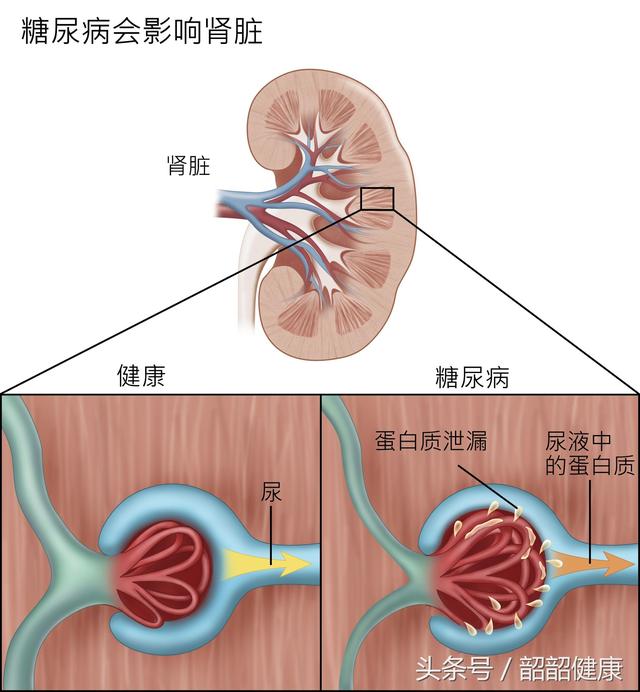
Diabetes affects the kidneys
So should you eat bananas before or after a meal?
In fact, there is no difference in consuming it in small quantities either before or after a meal. But the point is not to get too close to the main meal. On the contrary, it should be farther away. Because eating it in the middle of the meal will aggravate blood sugar fluctuations. And if you eat it as an additional meal, you can also avoid hypoglycemia.
Therefore, diabetics are not completely unable to eat bananas, but need to look at the special circumstances. If you don't eat this or that because you have diabetes, it is easy to cause malnutrition, and it will aggravate the failure of various organs. So diabetic patients need to eat reasonably, more scientific guidance.

Thanks for the invite.
Most diabetics are afraid to eat fruit for fear that it will affect their blood sugar. In fact, it is perfectly fine for sugar lovers to eat fruit, as long as they pay attention to the one-time and all-day intake, fruit does not pose a great threat to their blood sugar. Banana gives us the impression that it is very sweet, the sweetness of the banana is better than many fruits, so diabetics are even more afraid to touch it, in fact, the total sugar content of the banana is in the middle of the upper and is not considered a high level, and banana glycemic rate (an index that measures the ability of food to raise blood sugar per unit of time) is not very high, generally higher than the 55 glycemic index of food belongs to the higher glycemic index of food, is not suitable for sugary friends to eat more, however, bananas Glycemic index in about 50, does not belong to the high glycemic index food, sugar lovers can eat, bananas in the rich dietary fiber also helps to slow down the speed of food digestion, smooth blood sugar.
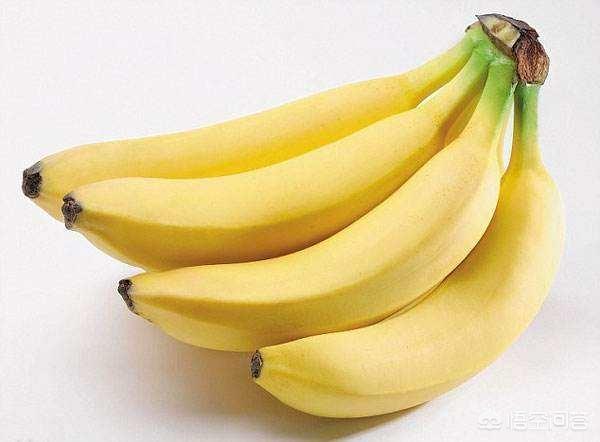
The calorie content of bananas is about 100g/87 calories, compared to other staple foods we usually eat much lower calories, eat a bowl of rice can be equal to eat 2 and a half bananas. However, the fruit is still rich in sugar food, do not recommend eating too many bananas, sugar lovers eat bananas at once if one is enough, a day, it is best not to exceed two. In fact, for the average person fruit is not a lot of good food, dietary guidelines recommend daily fruit intake of 250-350g or so, about the amount of two large apples, some of the day to eat a pound or two pounds of fruit friends can pay attention to, it is not likely that your blood sugar fluctuations are greater, and will cause unbalanced nutritional intake.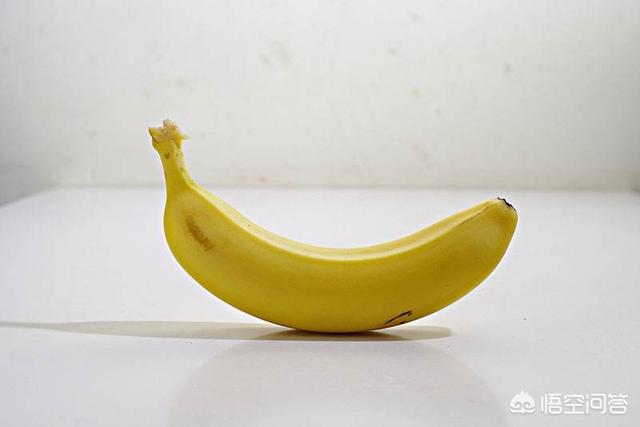
Of course, it is better for sugar lovers to choose fruits with lower sugar content and slower rate of glycemic rise. Fruits with lower glycemic index and less total sugar content, such as grapefruit, apples, kiwi, cherries, strawberries, peaches and oranges, can be consumed appropriately. Some friends may use "sweetness" to judge the sugar content of fruits, in fact, this can not be used as a criterion for judgment, such as bananas, bananas taste sweet, because bananas to "fructose" is the main, fructose is a kind of low-glycemic components, but its sweetness is higher than sucrose, glucose and so on. Fructose is a low glycemic component, but its sweetness is dozens of times higher than sucrose and glucose, so it tastes sweeter, such as grapes, oranges, strawberries and so on have this characteristic. Similarly we can not use not very sweet to judge the fruit is low in sugar, for example, dragon fruit is mainly glucose, it does not taste very sweet, however, it is very fast in glycemic rate. Sugar-rich, fast-glycemic fruits, such as durian, lychee, cinnamon, pineapple, mango, mangosteen, etc. It is best to eat less.
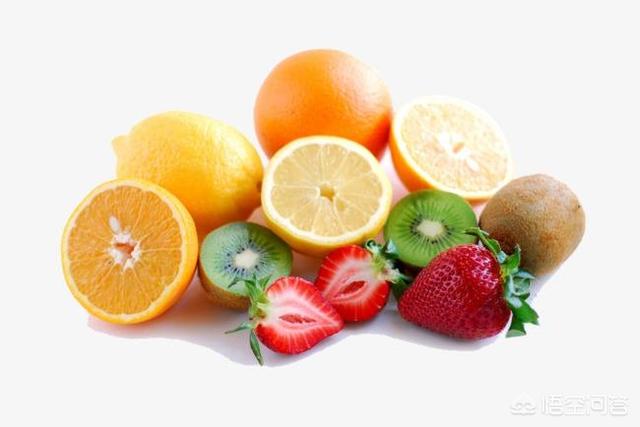
Sugar lovers to eat fruit more choose their blood sugar is slightly lower, such as between meals, or in a large number of exercise, so that it is easier to get up to the effect of smooth blood sugar. Fruits are best eaten fresh, do not juice to drink, so that the loss of dietary fiber after the loss of sugar more conducive to absorption, blood sugar is bound to soar. Some dried fruit, fruit preserves, etc. should not be eaten, these processed foods may add a lot of sucrose to enhance the flavor, and their water concentration, "glycemic load (food intake on the impact of elevated blood glucose indicators)" increased, eat more blood sugar is extremely adverse.
Can diabetics eat bananas?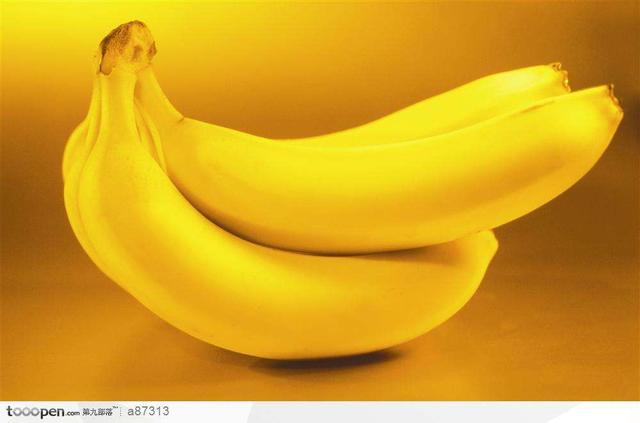
There are many types of bananas, whether they are red, yellow, large or small they are all great fruits that are incredibly sweet and inexpensive. Just, are bananas a fruit for diabetics?
The sugar content of bananas is high among fruits, about 23g/100g, which is nearly twice as much as that of apples and sorbets.
There is nothing wrong with diabetics choosing bananas as food, it's just a question of whether it's worth it. Because bananas have a high glycemic index and glycemic load index, try not to eat them unless you have a special craving for a taste.
Not only is the glycemic index and glycemic load much higher in bananas compared to kiwi fruit, the minerals and dietary fiber in them can be easily found in other low glycemic fruits, while the fruit contains less of the important Vitamin C, nowhere near as much as kiwi fruit, dates, pineapple or mango.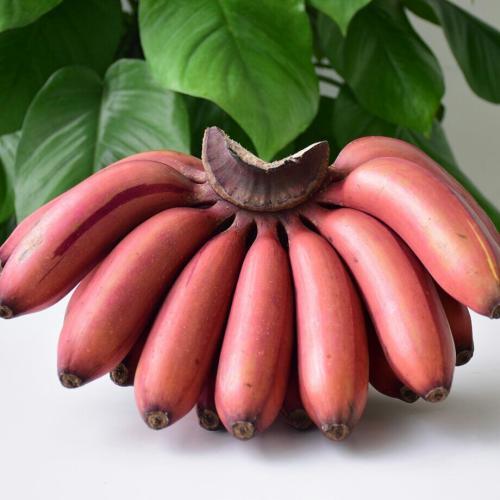
Bananas are good laxatives because of their high dietary fiber content, but dietary fiber is a perfectly ordinary nutrient in fruits, and there's no need to choose bananas because of it.
As for the potassium and magnesium in bananas, they are found in much higher amounts in fresh vegetables, just make sure to get more than 1 pound of vegetables per day, which includes more than 200g of leafy greens.
Diabetic patients should choose food in the spirit of preferring foods with low sugar content and low glycemic index GI and glycemic load GL (as detailed in previous articles). If fruits are chosen, they should be replaced in moderation with staple foods to achieve a total carbohydrate intake throughout the day that is not excessive.
For example: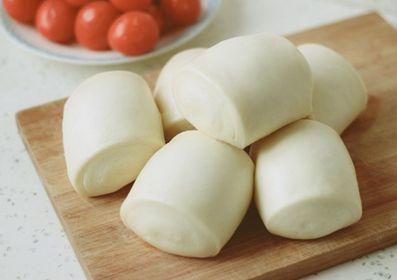
Bananas have 23g/100g of carbs, while rice has 25g/100g of carbs, which is very similar, meaning you'll need to subtract the equivalent weight of rice if you eat a banana;
Buns have 48g/100g of carbs, so if you eat 100g of bananas you need to subtract 50g of buns.
Rice buns can be eaten as a meal, but you can't find the feeling of fruit as a meal.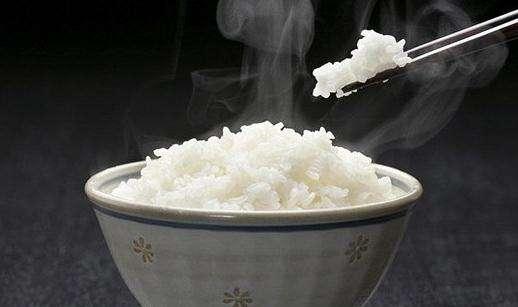
If you had said that, I would have eaten the banana only one bite, just a taste! Well, then, seeing as you're so capricious, I can rest easy!
All the images used in this article are from the Internet, and we would like to thank the author of the platform!

Banana flesh is sweet and soft, very common in daily life, very popular, and China is one of the world's oldest countries to cultivate bananas, the production is relatively large. Bananas are very nutritious, can be supplemented with a large number of vitamins, pectin and minerals, of which pectin also has the effect of delaying glucose absorption and lowering blood sugar.
Some diabetic patients are worried that bananas have too much sugar, which is not good for their health, in fact, diabetic patients are able to eat fruit, but they need to eat less. Bananas are very nutritious, the pulp contains protein, carbohydrates, calcium, phosphorus and other components, but also contains carotene, thiamine, vitamin C, vitamin E and rich trace elements such as potassium. Among them, vitamin A can promote growth, enhance resistance to disease, is necessary to maintain normal fertility and eyesight; thiamin can resist foot fungus, promote appetite, digestion, protection of the nervous system; riboflavin can promote the normal growth and development of the human body.
The sugar content of bananas has been determined to be moderate, as is the case with oranges, apples and pears. Accordingly, diabetics for eating bananas, in principle, do not eat or eat less can be. Diabetic patients, although afraid of sugar, but not without sugar, must eat also can not eat more, diabetic patients, if you eat a little banana, to a certain extent Shanghai can reduce cholesterol serum. It is best to eat bananas in the case of good blood sugar control, the standard is: postprandial blood glucose <10mmol / L, glycated hemoglobin less than 7.0%, blood sugar is stable, no major fluctuations in the short term. In addition, when hypoglycemia occurs, do not worry too much if the only thing around is bananas; eat immediately to correct the hypoglycemia and look for carbohydrates or glucose powder immediately, and pay attention to blood glucose testing.
In summary, diabetic patients, especially those with diabetes combined with hypertension, can still eat bananas under the dietary principles of balanced diet and moderate control. If you want to know whether the sweetness and measurement of the fruit you choose has an adverse effect on your blood glucose, you can check and adjust it by measuring your blood glucose and urine glucose before and two hours after eating the fruit.
Follow "Family Doctor Online" headline, more health Q&A easy to see~~~~
Diabetic patients can eat bananas, because patients need to limit only the calorie intake, rather than a specific kind of food, not to mention, ripe bananas glycemic index is only 52, as long as the consumption of control, its impact on blood glucose is still within the controllable range.
Diabetics need to be aware of the following when eating bananas:
1, bananas are best chosen to eat between meals, such as 2 to 3 hours after meals, probably at 10 o'clock in the morning as well as around 15 o'clock in the afternoon, most diabetic patients in order to better control blood glucose, meals will not eat too full, so this part of the patient is also hungry fast, especially in the above points in time, at this time, bananas as an additional meal, not only to alleviate the feeling of hunger, but also to replenish the consumption, to prevent the occurrence of hypoglycemia;
2, for diabetic patients, it is best not to exceed 90 kcal per day through eating fruits, in addition, in order to reduce the impact of additional meals on blood glucose levels, it is best to divide these fruits into two times to consume, to ripe bananas as an example, that is, about 100 grams per day, the patient can be consumed in the morning at 10 o'clock and at 15 o'clock in the afternoon when the 50 grams; (apples, if, roughly 200 grams per day)
3, the choice of bananas is also a good idea, because the degree of ripeness is different, its glycemic index and sugar content is also a big difference, just said, ripe bananas glycemic index of 52, but raw bananas glycemic index is only 30, where the difference can be a big to go, so we suggest that diabetic patients in the purchase of bananas, it is best to choose those a little on the side of raw a little bit, because they are not only on the impact of blood glucose is smaller, and its sense of satiety is also stronger, very suitable for as a meal for diabetic patients. The reason is that they not only have a smaller effect on blood sugar, but also have a stronger sense of satiety, which is ideal for diabetic patients as an additional food.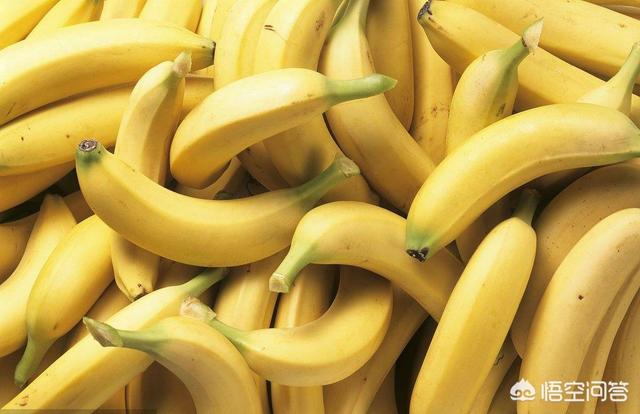
Thanks for the invitation!
In fact, there are many things about whether diabetics can eat so-and-so, such as whether they can eat steamed buns, whether they can eat noodles, whether they can eat pomegranates, and also whether your can eat bananas, and so on and so forth not to name a few!
In fact, all of these respond to the question of how diabetics can eat? Today I'm going to usefood glycemic index (GI)Come to teach us how to eat?
What is the Food Glycemic Index?
The Glycemic Index is a measure of how much carbohydrates in food affect blood sugar when they enter the body. These indices have already been measured and for us as patients, we just need to look back.
How do I use the Glycemic Index?
The smaller the index, the better! Learn to compare sizes
If the glycemic index is less than 55, we consider it a low-glycemic index food and a frequent choice food.
If the glycemic index is between 55 and 70, it is a medium glycemic index food and is an occasional choice.
If the glycemic index is greater than 70, it is a prudent choice.
In addition, the glycemic index is also affected by various processing factors. Roughly processed, lightly cooked foods will have a lower glycemic index.
Can I have a banana?

The penultimate one in the green area, the banana 52. looking at it from this point, the banana is edible. If you look a little closer, there's another banana looking upwards, but there's a raw one in parentheses, which has a much lower glycemic index, which also goes with the roughage that I mentioned earlier, where the raw one has a lower glycemic index.
Have you replied? I've got this list, so I don't have to worry about what I'm going to eat.
Follow the headline for more health knowledge
Diabetics can certainly eat bananas, but it's a matter of how many.
Bananas are very nutritious, each 100 grams of pulp contains 1.4 grams of protein, 0.2 grams of fat, 20.8 grams of carbohydrates, 1.2 grams of dietary fiber, calcium 7 mg, phosphorus 28 mg, iron 0.4 mg, also contains carotene, thiamine, niacin, vitamin C, vitamin E and rich in trace elements such as potassium.
A medium-sized banana contains nearly 20 grams of carbohydrates - what a concept!
That is, 1 medium banana = 80 grams of cooked rice.
Wow! That means that some people eat 2 bananas for the equivalent of 1 main meal. This is why hospitals don't recommend bananas for diabetics when they are suffering from the disease.
But what if we're craving bananas?
You can use bananas as a breakfast staple for carbohydrates as well as vitamins and minerals.
So how does a sugar addict pair a nutritious breakfast with bananas?
Use egg mixed with flour paste, thinly covered with banana and fried with 1 cup of milk and 1 fresh tomato, you can be a delicious breakfast! Sugar lovers, why don't you give it a try?
Something to keep in mind:Egg flour batter should be thin, not too much, do not add sugar in it oh.
If you have any questions, you can leave them in the comments section and I'll respond when I see them.
The above answer is provided by Ms. Song Mingyue, a registered dietitian of MicroSugar
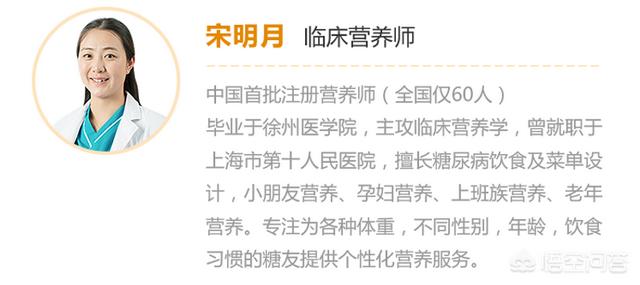
Thanks for the invite.
You can eat bananas, but be careful to control the amount. Diabetics are basically worried about whether they can eat fruits or not, in fact, sugar lovers are not completely unable to intake of sugar, such as the staple food we eat (rice, pasta, potatoes, etc.), it is impossible for us not to eat the staple food, but in fact, the carbohydrates in the staple food will ultimately be converted into glucose, and isn't glucose a factor that directly affects blood glucose? But staple food is the most basic food for us, including sugar lovers. The best thing for sugar lovers to avoid is "refined sugar", that is, food directly added sucrose, sugar, etc., these sugars can be more intuitively absorbed, instantly soaring blood sugar.
Sugars in fruits are not refined sugar, fruits are rich in water, water can reduce the glycemic load (a measure of the impact of food intake on blood glucose indicators), and fruits are rich in dietary fiber, which also helps to inhibit the rate of glycemic rise, in general, as long as the sugar lovers are willing to control the amount of fruits to eat, do not need to deliberately go to avoid eating fruits. For sugar lovers, the choice of food can remember more food "glycemic index" (GI value), in general, GI higher than 55 belongs to the glycemic index of the higher food, for sugar lovers is best to eat less or do not eat, glycemic index of 55 or less sugar lovers can be appropriate to consume, most of the fruits of the glycemic index below 55, part of the fruits are also higher than 55, so the fruits are also higher than 55, so the fruits are also higher than 55, so the fruits are also higher than 55. Most fruits have a glycemic index below 55, and some fruits are higher than 55, so if you have to choose, sugar lovers can try to choose more with a lower glycemic index, below 55. There are many fruits that can be chosen by sugar lovers, such as avocado, which not only has a low glycemic index but is also rich in unsaturated fatty acids, grapefruit, grapefruit, cherries, lemon, papaya, plums, strawberries, poppies, fresh peaches, apples, oranges, pears, kiwi fruit, blueberries and so on, all of which can be used as a good choice for sugar lovers.
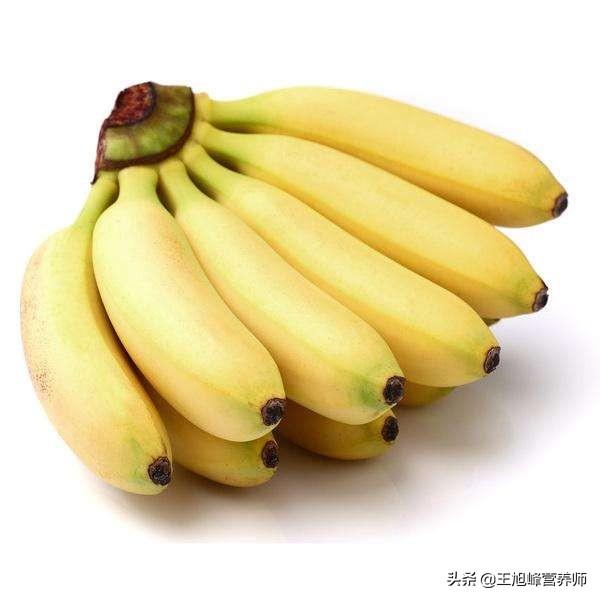
The GI value of bananas is just stuck at 50~55, so as long as you don't eat too much, sugar lovers can also eat bananas completely. Bananas are very rich in water-soluble vitamins, such as gelatin content, it can absorb a lot of water, help to ease the rate of glycemic. Some fruits are more special, they are extremely high glycemic index, such as watermelon, GI value as high as 72, but the glycemic load of watermelon is very low, it is rich in water, dietary fiber, as long as we control the amount of watermelon, in fact, can also eat. Although there is no fruit that sugar lovers must not eat, but sugar lovers in their own blood sugar control is poor, glycated hemoglobin index is not good, it is best to eat less of some high glycemic index fruits, such as lychee, pineapple, cinnamon, durian, fresh jujube, a variety of dried fruit. It must be noted that the best way to eat fruit is to eat fresh, many friends love to eat dried fruit, juice to drink, such as banana chips, sweet potato chips, dried mango, etc., dried fruit in the water evaporation, and may also add additional sucrose and other ingredients, which will make the fruit glycemic load increase, sugar concentration, volume reduction, eat a little bit of it may make blood sugar soared; after juicing the fruit is also a loss of more dietary fiber, unable to Inhibit the absorption of sugar, will also let the blood sugar spike.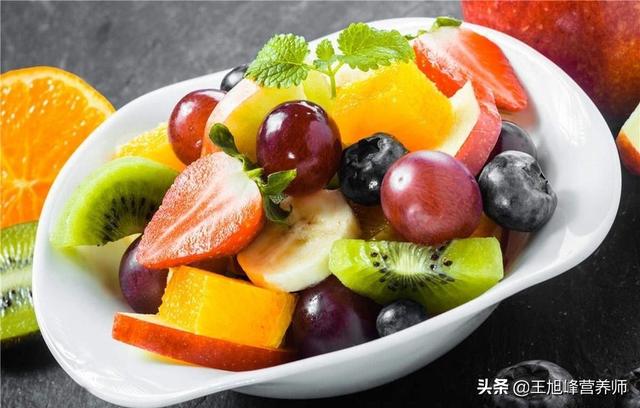
Choose to eat fruit time should not be after a meal, after a meal is already the blood sugar is in the stage of rising faster, this time if you eat fruit, continue to replenish the sugar, will make the blood sugar rise faster, so the blood sugar is bound to also soar. Eat fruit can choose between two meals of lower blood sugar time period, but also can choose a lot of exercise, easy to appear low blood sugar time. One-time fruit intake recommended 100 ~ 150g, not suitable for excessive intake.
Hello 796YouYou, happy to see you haha, thanks for the invite, eating a banana a day is good for your health. This shouldn't have anything to do with diabetes. Haha thanks for the headline, of meeting to meet to wish you good health, happy and happy. Thanks to the staff, let me answer this question, you guys worked hard.
This question and answer are from the site users, does not represent the position of the site, such as infringement, please contact the administrator to delete.